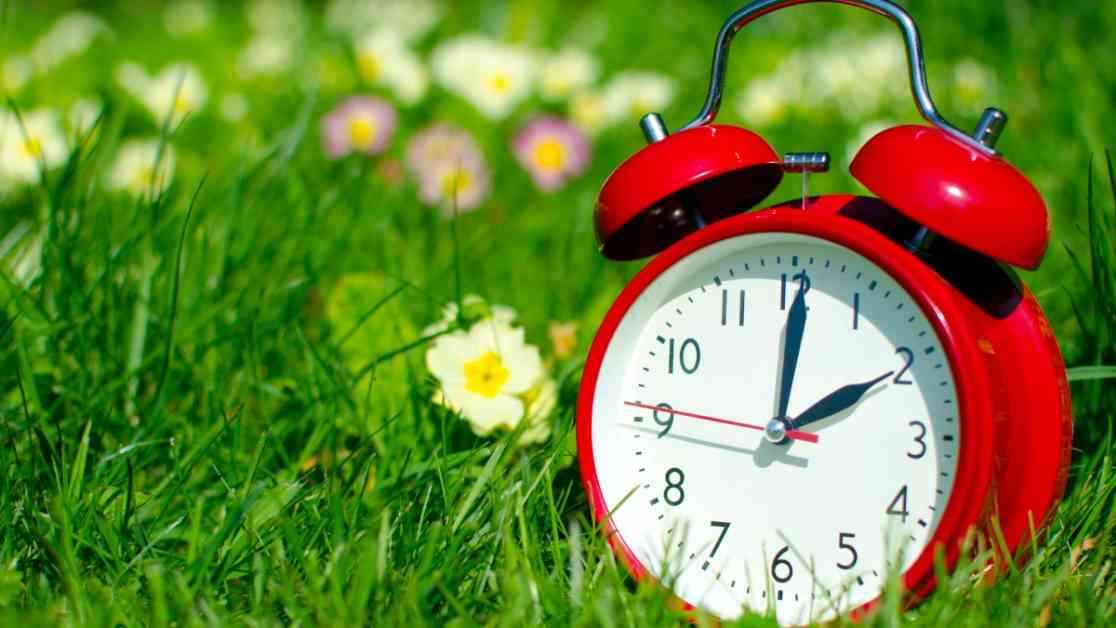The clock is ticking as Daylight Saving Time approaches, with most of America preparing to “spring forward” this Sunday at 2 a.m. But losing that precious hour of sleep isn’t just about feeling tired and irritable the next day. It can also have serious implications for your health.
As we adjust our clocks, darker mornings and longer evenings can throw off our internal body clocks, leading to disrupted sleep patterns that can persist for weeks. In fact, studies have shown a potential increase in heart attacks and strokes immediately following the March time change. So, what can we do to ease this transition and protect our health?
When Does Daylight Saving Time Start?
Daylight Saving Time officially kicks off this Sunday at 2 a.m., marking the disappearance of an hour of sleep for most of the U.S. The cycle will come full circle on November 2nd, when we “fall back” and return to standard time.
While Hawaii and most of Arizona opt out of this springtime switch, other states and countries around the world join in the ritual of adjusting their clocks. But how can we prepare ourselves for this shift, especially when many adults are already struggling to get enough sleep on a regular basis?
What Happens to Your Brain When It’s Lighter Later?
Our brains operate on a finely tuned internal clock that is regulated by exposure to light and darkness. This circadian rhythm, which spans roughly 24 hours, dictates our sleep-wake cycles and alertness levels. However, this rhythm can be disrupted by excessive exposure to light, such as the extended daylight we experience during Daylight Saving Time.
The consequences of sleep deprivation go far beyond feeling groggy the next day. It has been linked to serious health issues like heart disease, cognitive decline, and obesity. Moreover, disruptions in our circadian clock can impact vital functions like heart rate, blood pressure, stress hormones, and metabolism.
How Does the Time Change Affect Your Health?
Research has shown that the shift associated with Daylight Saving Time can have tangible effects on our health. Studies have revealed a temporary increase in fatal car crashes in the days following the spring time change, particularly in the mornings when sleep deprivation is most pronounced.
Furthermore, there is a concerning correlation between the time change and cardiovascular events. Reports from the American Heart Association indicate a surge in heart attacks on the Monday after Daylight Saving Time begins, followed by an uptick in strokes over the subsequent two days. This phenomenon may be attributed to the disruption of our circadian rhythms, which can exacerbate existing risk factors like high blood pressure.
How to Prepare for Daylight Saving Time
To mitigate the impact of the time change on your health, experts recommend gradually adjusting your bedtime by 15 to 20 minutes earlier in the days leading up to the transition. Rising earlier in the morning and exposing yourself to natural sunlight can help reset your internal clock. Additionally, establishing consistent daily routines around meals and exercise can signal to your body that a change is coming.
Avoiding afternoon naps, excessive caffeine consumption, and late-night screen time can also aid in the adjustment to an earlier bedtime. By taking proactive steps to align your body with the upcoming time change, you can better navigate the challenges of disrupted sleep patterns.
As the debate over the necessity of Daylight Saving Time continues, health professionals advocate for a more permanent solution that aligns with our natural circadian rhythms. While efforts to eliminate the time change altogether have faced obstacles, prioritizing standard time year-round may offer a more sustainable approach to promoting healthier sleep habits.
In conclusion, as we prepare to spring forward this weekend, let’s remember to prioritize our health and well-being amidst the whirlwind of clock adjustments. By understanding the impact of Daylight Saving Time on our bodies and taking proactive measures to adapt, we can navigate this seasonal transition with greater ease and resilience.


